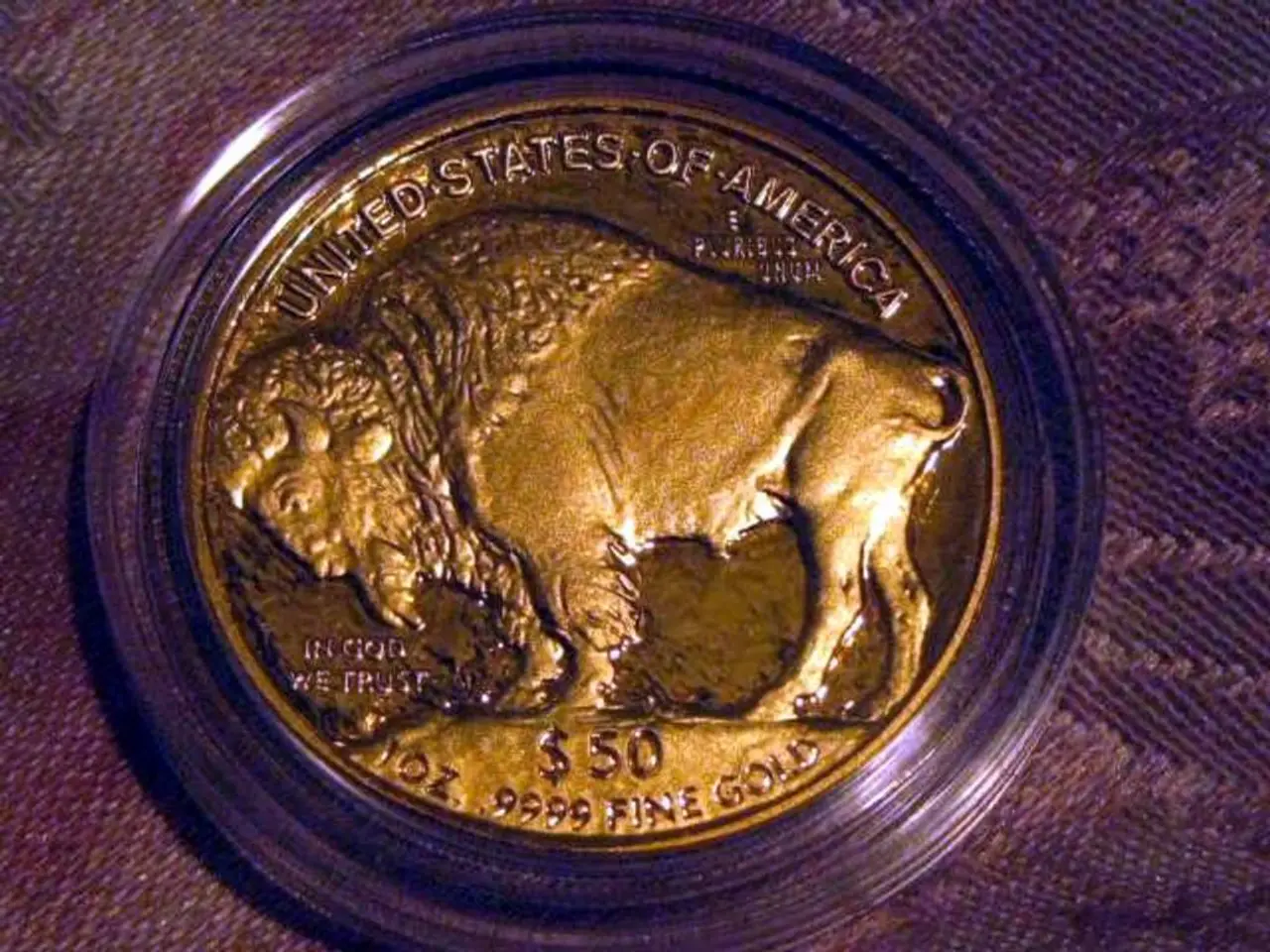Financial markets show contrasting responses following the Fed's moves during the "Fed-Chaos"; the Fed reducing interest rates leads to a dip in gold prices and an uptick in the dollar's value, sparking confusion.
The Federal Reserve (Fed) recently made a move to cut interest rates by 25 basis points, a decision described as an "insurance" measure amidst ongoing economic uncertainties. However, yesterday's meeting at the US central bank showed signs of chaos, with some suggesting that the Trump administration's policies have led to stagflation in the economy.
Despite the turbulence, the Fed remains "data-dependent" in its monetary policy decisions. This means that the Fed will continue to closely monitor economic data before making any further decisions.
In the financial markets, the dollar is gaining, with yields also on the rise. Normally, stock markets fall when yields and the dollar rise, but this trend might not hold true in the current economic situation. In fact, stock markets are continuing to rise after volatile trading, bucking the usual trend.
However, the rising dollar and yields have taken a toll on gold, which is falling after an initial euphoria. Gold, often seen as a safe haven during economic downturns, has failed to maintain its momentum, reflecting the resilience of the US economy.
The Fed has not indicated any immediate plans for further interest rate cuts. Economic researchers currently view the recent rate cut as a measured step reflecting confidence in reaching the inflation target around 2% by early 2025, with expectations of further gradual cuts. This approach is seen as supportive for the US economy by balancing inflation control and growth prospects without drastic shifts.
Powell and the Fed have also suggested that Trump's policies have led to stagflation in the US economy. Stagflation, a combination of stagnant economic growth and high inflation, is a worrying development that the Fed is closely monitoring.
As the economic landscape continues to evolve, the Fed will need to strike a delicate balance between maintaining economic growth and controlling inflation. The Fed's decisions will undoubtedly have far-reaching implications for the US and global economies.




